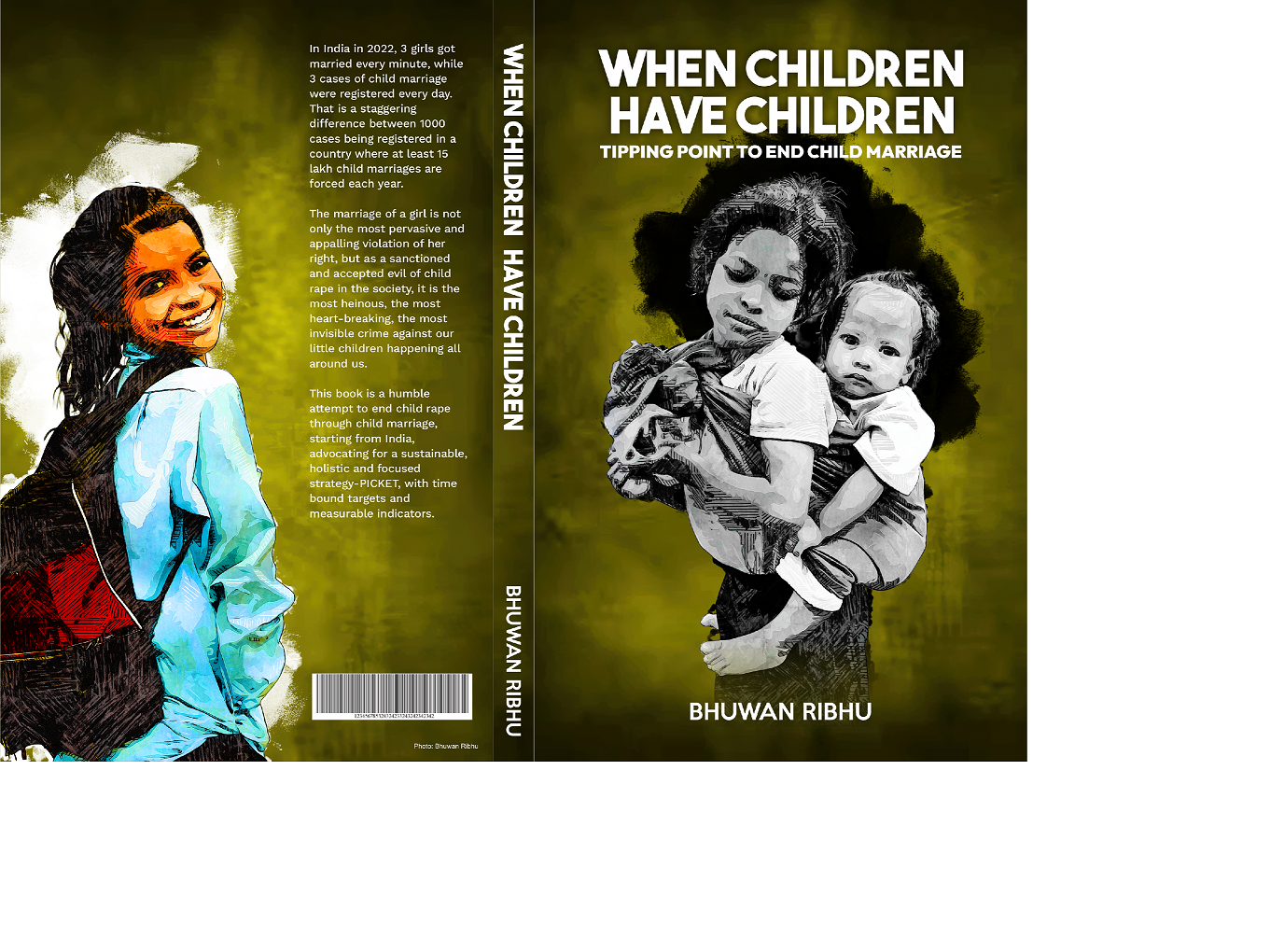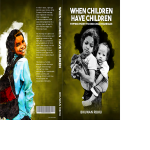Background
Child marriage is not just an
age-old social evil, but also a heinous crime that robs children of their
childhood. Child marriage is a “crime
against children” that violates basic human rights, minor girls are forced to
marry and live a life of mental trauma, physical and biological stress,
domestic violence including limited access to education and increased
vulnerability to domestic violence. The consequences of child marriage are
severe and extensive. Some of the specific consequences include: early
pregnancies leading to complications and higher rate of maternal mortality and
death of infants, malnutrition among both the infant and the mother, increased
vulnerability to reproductive health, disruption in girl’s education and
thereby reduction in opportunities of her personal and professional
development, domestic violence and abuse, limited decision making powers in the
household, and mental health issues.
India’s Census 2011 revealed 12 million children were married before attaining the legal age, of which 5.2 million were girls. Globally, child marriage is identified as a crime and a menace that needs to be eliminated. It finds space in the UN Sustainable Development Goals, under target 5.3 of Goal 5 that states elimination of all harmful practices, such as child, early and forced marriage and female genital mutilation by 2025.
The latest National Family Health Survey (2019-21) shows that although there is a drop in the overall rate of child marriages, from 26.8% in the National Family Health Survey (NFHS 4) to 23.3% in NFHS-5, it is still high despite laws, programmes and schemes in place to address the issue.
Child Marriage Free India Campaign
Understanding the seriousness of the issue, the Hon'ble Supreme Court of India in W.P. Civil 382 of 2013 pronounced that the sexual intercourse committed by the husband upon his wife being under the age of 18 years with or without her consent can be constituted as rape. To address this, the most definitive and audacious commitment to end child marriage was made with the launch of Child Marriage Free India campaign.
Child Marriage Free India (CMFI) is a nationwide campaign led by women leaders and a coalition of more than 160 NGOs spanning more than 300 districts working to eliminate child marriage in India. CMFI is working to attain the tipping point of child marriage, after which the society does not accept this evil practice and that will happen when the prevalence of child marriage is brought down to 5.5% by 2030, from the current national prevalence rate of 23.3%. This is being done by initially targeting 257 high-prevalence districts and gradually focusing on all the districts of the country.
Child marriage results in child rape, resulting in child pregnancy, and in a large number of cases, may lead to child deaths. For decades, we have been losing generations of our children to child marriage. The Child Marriage Free India campaign has received extended support from various Departments and Institutions of over 28 States. So far, across India more than 5 crore people have taken the pledge to end child marriage over the last one year through the efforts of the Child Marriage Free India Campaign.
Know more about the Child Marriage Free India (CMFI) Campaign: https://www.childmarriagefreeindia.org/
Tipping Point to end child marriage
Noted child rights activist, author, Supreme Court lawyer and founder of CMFI campaign, Bhuwan Ribhu has authored a book - ‘When Children Have Children: Tipping Point to End Child Marriage’ and put forth a framework advocating a sustainable, holistic and focused strategy with time-bound targets and measurable indicators to make India child marriage free by 2030. This book shows the path to eliminating child marriage in India within the next decade. As suggested by the author in the book, by adopting a systematic, highly focused, and intensive intervention model, over a phased timeline it is possible to reduce the national child marriage prevalence levels to 5.5% —the threshold, the tipping point, beyond which the prevalence is anticipated to diminish organically with reduced reliance on targeted interventions.
Tipping Point Methodology
The aim of reduction of 60% of child marriage (in each of the phases) is assumed to bring down the incidence of child marriage to 5.5% in the next 9 nine years from 2021, from the last available estimates i.e., NFHS-5, till 2030. An additional assumption is that such a focused and elaborate intervention against child marriage would have a ripple effect. The tipping point analysis has been divided into two phases. The first phase will extend over a period of six years, starting in 2021. Subsequently, the second phase will span over a three-year period. It is expected that the national average for child marriage prevalence (percentage women aged 20-24 who were married before 18 years) would decline from 23.3% to 13.7% if the prevalence of child marriage is reduced by 60% in the 257 high-prevalence districts in the first phase followed by a further reduction of 60% in all districts across the country.
In order to reach the Tipping Point, the author has proposed a strategy at national and district level.
- National Level strategy where Governments, Institutions, statutory bodies, etc. work towards prevention, protection, increased investment, improved prosecution, convergence and use of technology for monitoring
- District Level strategy is similar to national level strategy but includes district administration, Panchayats, civil society, NGOs, other functionaries, parents and children who work collectively to prevent, report, and take action against child marriage
[EXAMPLE]Entangled in the clutches of child marriage with the promise of love rescued
Mina, a 14-year-old girl from a remote village, hailing from a modest family, found herself entangled in a harrowing situation. What began as a blossoming romance with a local boy took a dark turn when he resorted to blackmail, coercing Mina into marriage and this marriage was nonconsensual. This case study sheds light on how Assam Centre for Rural Development (ACRD) team’s intervention helped Mina and her family escape the clutches of child marriage.
In the quaint village where Mina lived name Sonapur village, societal norms often perpetuated early marriages. Mina's family, like many others, adhered to traditional values but prioritized their daughter's education. However, the arrival of a charming boy changed the course of Mina's life. The boy exploited her trust, resorting to manipulation and blackmail to force her into marriage.
During an awareness campaign on child marriage organised by the Access to Justice team on 20.06.23, Mina’s case came to light. Sensing the urgency and severity of the situation, the team decided to investigate further. Mina's family was initially hesitant to disclose the details, but with gentle persuasion, they shared the distressing story.
Realizing the need for immediate action, the team extended support to Mina's family. They helped them understand their rights and the legal consequences of child marriage. Encouraging the family to stand against the injustice, the team assisted them in filing a First Information Report (FIR) against the boy on 02.07.23, on the same day police registered the case and rescued the Child.
With the FIR filed, the legal machinery began its course. The team provided guidance to Mina's family throughout the legal proceedings. On 03.07.23 Mina went for the medical test and gave the statement to the CWC on the same day with the police. The team ensured that they had access to necessary resources. The case gained attention, prompting community discussions on the perils of child marriage. The team also filed for victim compensation at the DLSA Court and the compensation is currently under process.
The legal battle was not easy, but with the unwavering support of ACRD’s Access to Justice team of Baksa, Mina's family emerged victorious. The boy faced legal consequences, and Mina was spared from a life-altering mistake. The incident prompted a shift in the community's mindset, with increased awareness about the harmful impacts of child marriage.
Mina's case serves as a poignant example of how our team interventions can empower vulnerable individuals and families to break free from the shackles of harmful practices. By combining legal support with community awareness, the NGO played a crucial role in preventing a child marriage and fostering positive change in the village. Now Mina has been re enrolled in school (Pragati HS School Sonapur) and is continuing with her studies.

